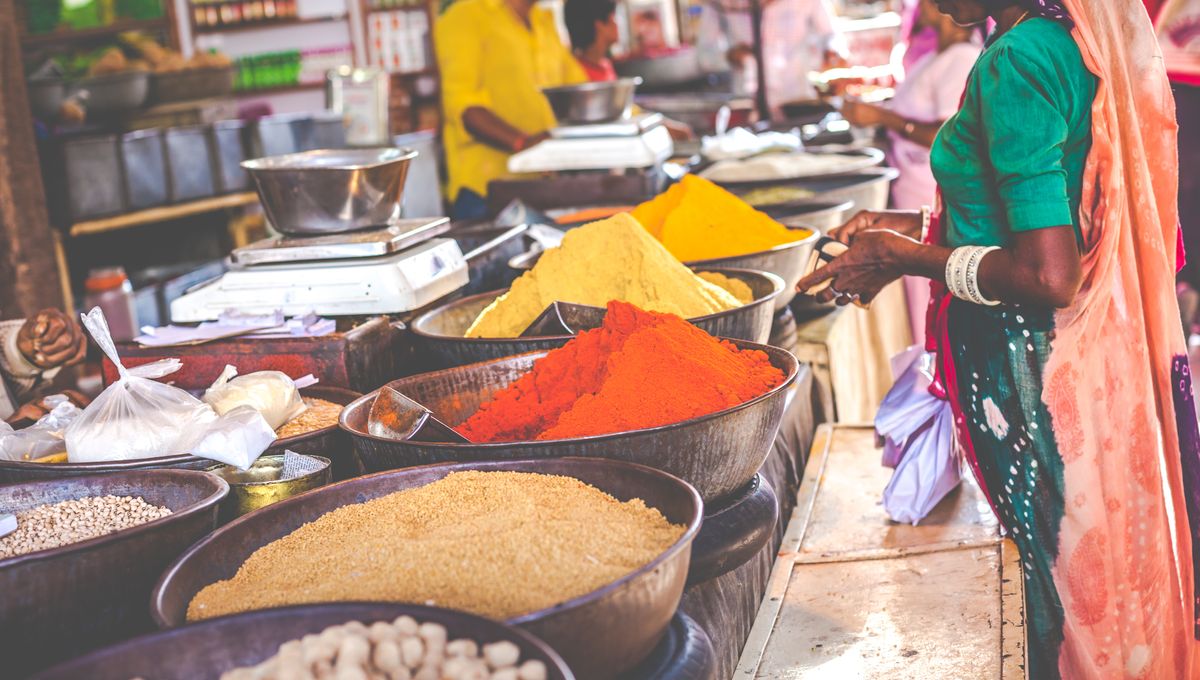
The cuisines of some countries are synonymous with spice – think India, Thailand, and Mexico – while others take a more “minimalist” approach to seasoning (looking at you, Britain and Scandinavia). It doesn’t take an AI-powered Anthony Bourdain to work out that, generally speaking, warmer places have a friendlier relationship with spicier food.
ADVERTISEMENT GO AD FREE
Despite popular belief, the allure of spice isn’t about sweating out the heat or masking the taste of rancid meat. Instead, one compelling (and controversial) theory suggests that spicy cuisines evolved in hot climates because spices are surprisingly effective at warding off harmful microbes that thrive in warmer temperatures.
This topic of “Darwinian gastronomy” was investigated by a study in 1998 that analyzed the use of 43 spices in 4,578 recipes from 93 traditional cookbooks across 36 countries to understand the factors influencing the use of spice.
The researchers noted that warmer temperatures correlate with increased spice use. In 10 countries – Ethiopia, Kenya, Greece, India, Indonesia, Iran, Malaysia, Morocco, Nigeria, and Thailand – every meat-based recipe called for at least one spice. They used a higher frequency of different spices in their meals too. Notably, these countries all have fairly hot temperatures. By contrast, colder countries – namely Finland and Norway – had many recipes that required no spices at all.
The trend could be seen within countries that have mixed climates too, although the pattern was subtler. In southwestern China, part of the country with subtropical temperatures, 40 percent of recipes call for at least one of the four spices, versus 30 percent of recipes from northeastern China, known for its mountains and colder weather.
Intrigued by the link, the researchers explored the antimicrobial properties of different spices, which can inhibit and kill foodborne microorganisms, including bacteria, viruses, and fungi. For instance, ginger is loaded with gingerol, which fights bacteria and viruses, while turmeric contains curcumin, which is purported by some to hold antibacterial, antifungal, and antiviral properties.
The analysis revealed that more potent antibacterial spices are used in hotter regions, supporting the idea that spices help prevent foodborne illnesses that thrive in warm weather. Furthermore, warmer parts of the world were more likely to use specific combinations of bug-busting spices that work well together.
ADVERTISEMENT GO AD FREE
“Many spices are also synergists. When combined, those spices exhibit greater antibacterial effects than when each is used alone. This is interesting because recipes in our sample call for an average of four different spices. Some spices are so frequently combined that the blends have acquired special names, such as ‘chili powder’, a a mixture of red pepper, onion, paprika, garlic, cumin, and oregano) and ‘oriental five spice’ (pepper, cinnamon, anise, fennel, and cloves),” the study authors wrote.
It’s a fascinating theory, but other researchers have argued that the relationship might not be so simple. A study in 2021 concluded there’s “little evidence that spicy food in hot countries is an adaptation to reducing infection risk.”
Cuisines in hot countries don’t use more vinegar or alcohol, two ingredients that are easily accessible and famously effective at controlling microbes. Similarly, the idea that spices should be used more in riskier dishes doesn’t hold up. While meat and seafood dishes tend to be spicier, they contain more ingredients overall, and the level of spiciness in dishes doesn’t seem to correlate with the risk of foodborne illness.
There are plenty of exceptions to the rule too. Temperatures in Seoul will frequently drop to sub-zero levels in the winter months, yet you’ll find an abundance of spicy Korean foods and ingredients, like kimchi, gochujang, and gochugaru. Likewise, the pathogen hypothesis doesn’t explain the great British tradition of ordering the spiciest curry possible.
ADVERTISEMENT GO AD FREE
The 2021 study suggests that the relationship between spice use and temperature is more complex than previously assumed, highlighting that spice consumption is also linked to broader socioeconomic factors, such as GDP and life expectancy, rather than solely to infection reduction.
Ultimately, the link between spice use and climate is likely to be more intricate than it first appears. Spice consumption isn’t just a practical response to heat; it’s woven into a complex web of cultural, environmental, and economic influences. How we choose to season our food reflects a deeper interplay of history, geography, survival, and identity – an ever-evolving story that defies a one-line answer.
Source Link: Why Do Hotter Countries Have A Taste For Spicier Food?